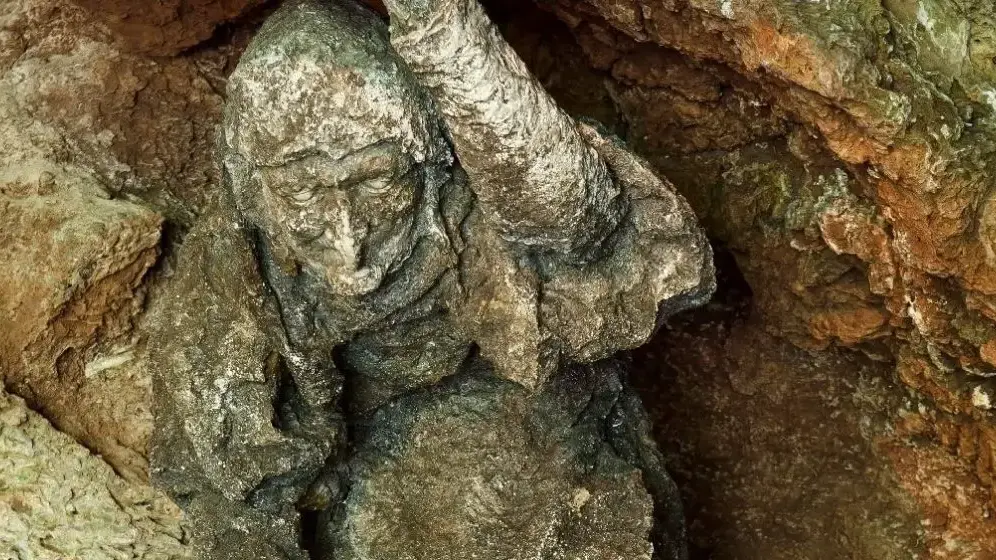Opulence and luxury sometimes hide dark secrets. Marie Delphine LaLaurie's story is a good example. Married three times, she became famous with the last name of her last husband. She had been born as Marie Delphine Macarty around 1775 and was part of a wealthy family in New Orleans, in the southern state of Louisiana. The woman and her four brothers used to frequent the most refined salons and the socialite of the time from an early age. Much of it went to the dazzling dinners that LaLaurie organized in its imposing Royal Street mansion. They drank champagne, danced, and floated in a sea of laughter, but a random fire destroyed that house of cards forever.
The flames revealed that the woman mistreated her slaves. When firefighters reached the top floor of the building they discovered hell itself: people hung by the neck by hoops, tortured and mutilated. The survivors were starving and some had been forced to ingest their own droppings. These actions earned her the qualification of witch of Royal Street. Behind her social position was a ruthless serial killer who has led to countless reports, books and television series. In the third season of the successful American Horror Story it appears in up to 10 chapters. The role of LaLaurie is embodied by the Oscar-winning Kathy Bates, who in an interview acknowledged having discovered "a really horrible character." Some sources trace the origin of this perversion to her childhood, when slaves on her plantation murdered a relative during a revolt.
A powerful woman
LaLaurie's life was marked by that tragedy. She married for the first time in 1800 with a Knight of the Royal and Very Distinguished Spanish Order of Carlos III. Four years later he was promoted to Consul General of Spain in Louisiana, but died months later in Havana. The accounts of the event differ. The writer Grace King narrated in 1921 that the trip was a military punishment, but that the queen was impressed by the beauty of his wife and forgave her. Other authors, such as Stanley Arthur, indicate that he was summoned to occupy a new position, but that he never came to Spain. During his stay in Cuba, LaLaurie gave birth to his first daughter. On his return to the United States, he took over the estate he had inherited: a sugar cane plantation where dozens of blacks worked, since slavery would not be abolished until the end of the Civil War in 1865.
The new responsibilities added to her reputation as an intelligent, powerful and skillful woman in business. In 1808 she remarried with a banker and merchant of French descent. He was a very rich man, but much older than her. The couple had four daughters. LaLaurie's second husband died under bizarre circumstances in 1816, although the murder could never be proven. She inherited large sums of money and vast wealth again, reinforcing her notoriety among the upper classes in New Orleans. So she decided to pursue the then lucrative business of the slave market.
Her third marriage was celebrated in 1825, this time with Leonard Louis Nicolas LaLaurie, a French doctor much younger than her. The couple bought a property on Royal Street, a famous street in the French Quarter. The woman managed the estate to her liking and, regardless of expenses, built an imposing three-story mansion in which she included dependencies for her domestic service, those slaves who were in charge of offering dinner to the guests. But some became suspicious when they observed the service "emaciated and unhappy", as the English writer Harriet Martineau would write in 1838.
Unpunished crimes
more posts from this blog
The real crime that inspired the best film noir
The terrible story of the beautiful young woman locked 25 years in her room
How many people did the American Jack the Ripper murder?
The ruthless murderer who poisoned a hundred people dragged by greed
The rumors spread, despite the fact that, publicly, the woman was concerned about the conditions of her slaves. Records of the time show that LaLaurie released two of them (Jean Louis, in 1819, and Devince, in 1832). A local judge visited the home, but found no evidence of abuse. Despite the fact that slavery was permitted, the laws explicitly prohibited doing harm to slaves. Weeks later, some neighbors saw a 12-year-old girl fall from the roof of the mansion trying to flee her mistress, who was chasing her with a whip to punish her. The ruthless LaLaurie forced her body to be tied to a pole and lashed her furiously. An investigation found her guilty of cruelty and forced her to sell nine slaves, but she bought them back through distant relatives.
The discovery of that hell was immediate. On April 10, 1834, neighbors alerted to a huge fire in the mansion. It started in the kitchen, and a local newspaper reported days later, it was produced by a 70-year-old female slave who had been tied to the oven by an ankle. She wanted to commit suicide for fear of being taken to the attic, from where no one returned. When the firefighters reached the top floor they discovered a Dantesque scene. Judge Jean-Francois Canonge later narrated it: “There was a naked woman with an iron necklace and spikes tied to the wall. She had abundant marks on her back that evidenced the use of red-hot whips or irons. Another elderly woman had a deep head injury and was unable to speak or walk. There was also a man castrated and whose tongue had been cut. "
The police rescued seven slaves alive who remained locked in cages. They begged to be killed to end their suffering. They were transferred to jail to heal their wounds, but two of them were unable to overcome it. Thousands of citizens passed through the prison, who were horrified. Enraged, they razed the mansion, of which only the walls remained standing. The LaLauries managed to flee. They came by carriage to the port and from there traveled to Mobile, Alabama. The marriage broke up at that time. Some source maintains that the person responsible for these acts was the husband, who used the slaves as guinea pigs. A subsequent investigation uncovered almost a hundred corpses buried in the mansion's garden, but the couple's trail disappeared forever. In the 1930s, the reverend of the Saint Louis cemetery discovered an old and cracked tombstone with the inscription "Madame LaLaurie, Marie Delphine Macarty was born, died in Paris on December 7, 1942, at the age of 67" . Their crimes had gone unpunished.
Read more blog topics and follow us on Flipboard



/cloudfront-eu-central-1.images.arcpublishing.com/prisa/XV3RV6VB3NAOFNP4TMVZXPO6BQ.jpg)





